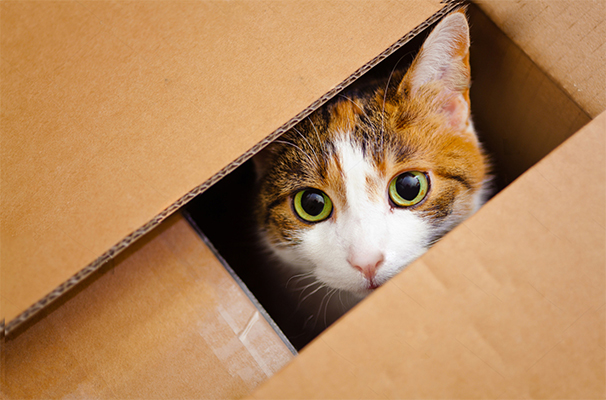Charlie Wright
BSc (Hons) RVN ABTC – AT
This month we’re delighted to introduce a guest blog from RVN Charlie Wright.
Charlie has been working in veterinary environments since 2010, where she has developed a passion for behaviour-centred approaches to all patients.
Since gaining a degree in Animal Behaviour and Welfare, Charlie’s focus has been on working with other veterinary professionals to reduce patient stress. She has spoken at conferences, supported practices rolling out behaviour services, and is now teaching student veterinary nurses.
Charlie is particularly interested in reducing stress in practice, and in 2018, she ran a study to investigate whether providing hospitalised cats with either a box or a partial towel cover to the front of the cage reduced stress levels, and whether each of these methods was sufficient in providing hiding opportunities.
To reduce stress of hospitalised cats, literature advises providing cats with the opportunity to hide using either a box or partially covering the cage front. While studies have found benefits of the box method, there is currently no evidence for the efficacy of the partial cover.
To investigate this, 42 healthy pet cats admitted to a veterinary practice for routine neutering were provided with either a hide box, a partial towel cover to the front of the cage, or neither treatment. Behavioural observations were taken for 60 minutes recording: 1) Kessler and Turner’s Cat Stress Score (CSS), 2) location within the cage, 3) hide seeking behaviour, and 4) use of treatment.
The results showed a significant difference in CSS between cats with a box and the control cats (p=0.007), but not between cats with towel cover and the control cats (p=0.069). There was no significant difference in CSS between box cats and towel cats (p=0.406), but those with a box hid in it 68% of the time, significantly more than the towel cats used the towel (n=30%) (p=0.027). There was a significant difference in hide seeking behaviour between all treatments (p=0.016). A positive correlation was found between CSS and hide seeking behaviour within all groups (rs=0.673), and this was stronger when analysed in control cats only (rs=0.829).
In conclusion, the study suggested that a box provides an opportunity to hide and appears to reduce behavioural signs of stress. Though a partial cover may also help, there is not significant evidence for its efficacy in providing hiding opportunity or reducing stress.
Interested in learning more?
If you’d like to learn more about how to reduce stress in cats and dogs in the clinic, take a look at our Calm Clinic Academy, run by Charlie, which begins in December 2024. This comprehensive year-long programme is designed to equip delegates with tools to reduce fear, anxiety, and stress in patients through subtle practice adjustments. By recognising triggers and stressful situations, we can take steps to prevent the worst-case scenarios, including scarring of the amygdala. Prevention is always better than dealing with the consequences.
Suitable for vets, vet nurses, and practice managers, delegates will learn through a combination of online training programmes, case studies, and two full attendance days, as well as a visit to the London Cat Clinic, a feline-only practice offering gold-standard care to cats to reduce stress and anxiety.
If you’re passionate about reducing fear, anxiety and stress in practice to improve the emotional wellbeing of your patients, this programme is for you!
Featured courses block
Please enter content to generate the block
